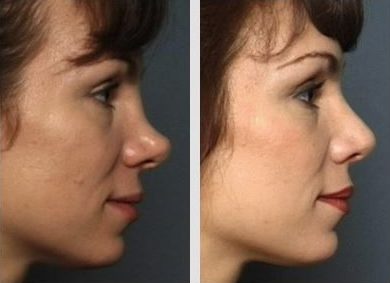Things about Austin Rhinoplasty
Table of ContentsThe 45-Second Trick For Austin Rhinoplasty SurgeryHow Austin Rhinoplasty can Save You Time, Stress, and Money.Examine This Report on Rhinoplasty Austin
Technically, the plastic cosmetic surgeon's incisional method classifies the nasal surgery either as an open nose surgery or as a closed nose surgery treatment. In open nose surgery, the surgeon makes a small, irregular incision to the columella, the fleshy, exterior-end of the nasal septum; this columellar incision is additional to the typical set of incisions for a nasal correction.Rhinoplastic correction: A child affected with a cleft lip and a cleft palate. rhinoplasty austin tx. Except for the columellar cut, the technical and procedural methods of open nose job and of closed nose job are similar; yet closed rhinoplasty treatment functions: Decreased dissection (cutting) of the nasal tissuesno columellar incision Reduced prospective for the excessive decrease (cutting) of the nasal-tip support Lowered post-operative edema Reduced visible scarring Reduced iatrogenic (unintended) damage to the nose, by the surgeon Increased accessibility for effecting in situ procedural and technical modifications Palpation that allows the surgeon to feel the interior modifications effected to the nose Shorter operating space time Quicker post-surgical healing and convalescence for the client The open nose surgery method pays for the cosmetic surgeon benefits of ease in securing grafts (skin, cartilage, bone) and, most importantly, in securing the nasal cartilage properly, and so better to make the proper evaluation and solution.

Cleft lip and palate in mix; cleft lip (cheiloschisis) and cleft taste buds (palatoschisis), separately. Hereditary nasal irregularities Genetically obtained ethnic-nose irregularities Allergic and vasomotor rhinitis swellings of the mucous membrane of the nose triggered by an irritant, and caused by circulatory and worried system conditions. Bites animal and human Burns caused by chemicals, electrical power, friction, heat, light, and radiation.
Neoplasms malignant and benign growths Septal hematoma a mass of (usually) clotted blood in the septum Contaminants chemical damages brought on by inspired substances e. g. rhinoplasty austin tx. powdered drug, aerosol antihistamine medications, et cetera. Terrible deformities caused by blunt trauma, permeating trauma, and blast injury. Venereal infection e. g., syphilis Recently, ultrasonic rhinoplasty which was introduced by Massimo Robiony in 2004 has ended up being an option to traditional rhinoplasty.

Examine This Report on Nose Job Austin
Generally, the plastic surgeon initially separates the nasal skin and the soft tissues from the osseo-cartilagenous nasal structure, and then improves them, stitches the incisions, and applies either an external or an internal stent, and tape, to incapacitate the recently rebuilded nose, therefore help with the recovery of the surgical cuts.

The autologous grafts typically are collected from the nasal septum, but, if it has insufficient cartilage (as can occur in a modification rhinoplasty), then either a costal cartilage graft (from the chest) or an auricular cartilage graft (concha from the ear) is gathered from the client's body. When the rhinoplasty needs a bone graft, it is harvested from either the cranium, the hips, or the chest; furthermore, when neither type of autologous graft is available, a synthetic graft (nasal implant) is utilized to augment the nasal bridge.
To record the "before-and-after" physiognomies of the nose and the face of the client, the particular visual point of views required are pictures of the nose seen from the anteroposterior (front-to-back) point of view; the lateral view (profiles), the worm's-eye view use this link (from below), the bird's-eye view (overhead), and three-quarter-profile views. Picture A. Open nose job: At nose surgery's end, after the plastic cosmetic surgeon has actually sutured (closed) the cuts, the fixed (brand-new) nose will be dressed, taped, and splinted stable to permit the undisturbed recovery of the surgical cuts. Open nose surgery: Post-operative, the taped nose, prepared to receive the metal nasal splint that paralyzes and protects the newly remedied nose. Picture C. Open nose surgery: The metal nasal splint help wound recovery by safeguarding the tender tissues of the new nose. Photograph D. Open nose job: The taped, splinted, and dressed nose completes the rhinoplasty.
Open nose job: After the preliminary taping of the nose, a tailor-made, metal nasal-splint, created, cut, and formed by learn this here now the cosmetic surgeon, is emplaced to paralyze and protect the tender tissues of the brand-new nose throughout convalescence. Photograph D. Open nose job: The taping, emplacement of the metal splint, and dressing of the brand-new nose finish the nose surgery procedure.
Picture 2. Open nose surgery: The best lower lateral cartilage (blue) is exposed for correction. Photo 1. Open nose surgery: The columellar incision defined as a red-dot guideline, will help the cosmetic surgeon in the accurate suturing of the nose. Picture 4. Rhinoplastic correction: A nasal-hump excision plan; the black line defines the dorsal aircraft of the new nose.
Open nose surgery: the nasal pointer is sutured to narrow the nose. Photograph 1. Open nose surgery: The incisions are endonasal (in the nose), and thus are hidden. The skin-incision to the columella help the plastic surgeon in precisely suturing to hide the scarexcept for the columellar incision (red-dot guideline) across the nasal base.
An Unbiased View of Austin Rhinoplasty

Photo 2. Open rhinoplasty: The nasal interior. The scissors indicate the lower lateral cartilage (blue), which is among the wing-shaped cartilages that conform the pointer of the nose (austin rhinoplasty surgery). The rugged red delineation shows the locale of the columellar cut. As soon as the skin has actually been raised from the bone-and-cartilage structure, the cosmetic surgeon performs the nasal correction jobs.